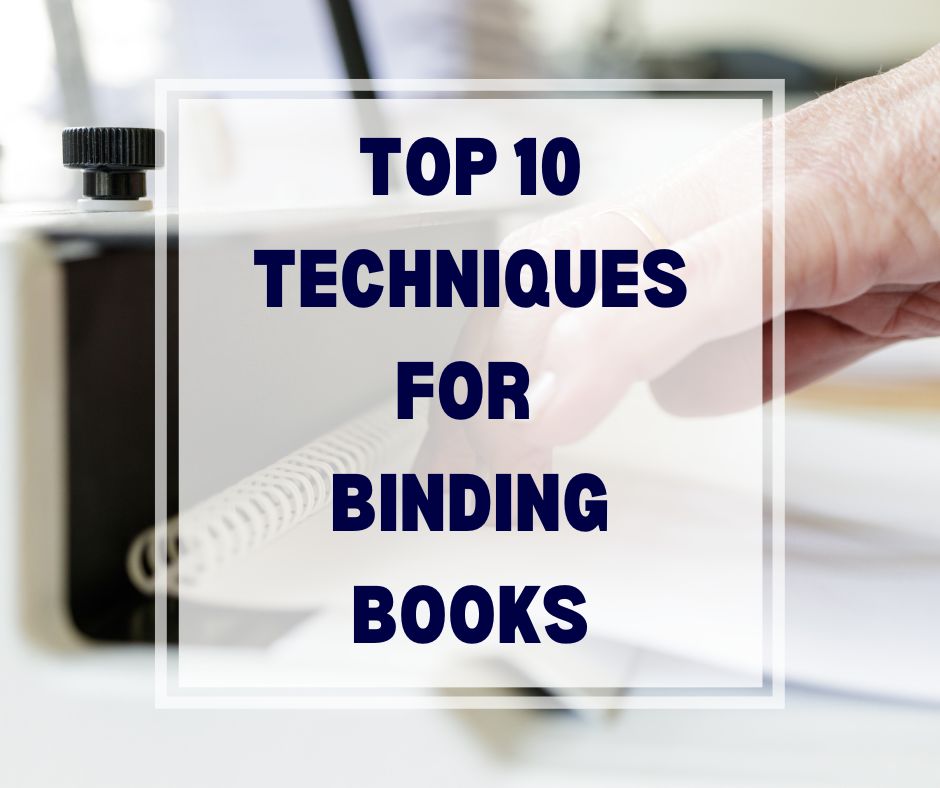A well-bound manuscript serves practical purposes and provides considerable aesthetic satisfaction. However, picking a suitable fashion might take time, even more so when your limited bookbinding expertise clouds your creativity.
Now is the time to familiarize yourself with the basics of post-press excellence so that you can pay more attention to your designs.
1. Saddle stitch binding
Saddle-stitching can be located wherever there is brevity that needs to be bonded. Saddle-stitching is one of the most straightforward techniques in order to keep printed pages folded in half, and it works best for smaller papers. Think of it as an upgraded kind of stapling that works for any inexpensive booklet, brochure, catalog, program, or magazine.
2. PUR binding
What makes the edges of a paperback book so PUR-fect? What is known as the PUR method? Maybe you’ve heard the term “perfect binding” and been left wondering what it means. In both cases, the pages are glued to the spine, which is made of paperboard or thick cover stock. While the two uses are conceptually similar, PUR binding utilizes a polyurethane reactive adhesive rather than a standard (hence where it gets its name from).
PUR creates a robust, crisp spine durable enough to withstand heavier stocks, making it ideal for printing a paperback, annual report, or luxury project.
3. Hardcover or case binding
Nothing beats the look and feel of a book bound to exceptionally high standards. This more robust alternative will guarantee that your book will become an attractive addition to any coffee table or bookcase, whether it is section sewn or bound from single sheets. A hardcover or casebound book may cost more, but it will last considerably longer and be worth much more in the long run.
There is nothing better if you want to make money off your writing. Books with a hard cover and a finish like vellum or buckram typically have a hollow back and a visible seam so the reader can be opened more quickly.
4. Singer sewn binding
Putting together a scrapbook and want a dash of whimsy for your next artistic endeavor? Singer sewing, a classic bookbinding method, is stitching the folded pages together at the spine with a single thread of contrasting color. This sturdy binding style is used for single-section books and requires no glue or staples. You can choose to have the stitching show on the exterior or hide it on the inside.
5. Section sewn binding
This form of binding is sewed in parts down the spine and then cemented for a robust finish, as the name suggests. Section sewing is excellent for books of any size since it allows you to open them flat no matter how many pages it has.
6. Coptic stitch binding
The documents can be laid flat with Coptic stitching, much like section sewing. While the two techniques are similar in appearance, the Coptic stitch bind provides a finish that doesn’t require adhesive. Whatever the case, the spine of a book bound in this fashion can be bent without compromising its structural integrity. In this mode, you can access any part of your text without jeopardizing its long-term readability.
7. Wire, comb, or spiral binding
The classic approach involves a loop wire and hole puncher for business documents and school exercise books. A wire, comb, or spiral bind can be highly effective. This alternative can be used in various contexts and is also rather fashionable.
8. Interscrew binding
This type of binding, often called Chicago screw binding, is ideal for professional documents such as portfolios. Binding screws secure two covering boards together after holes have been bored with surgical accuracy. This binding method is preferable to ring binding because it is more aesthetically pleasing and allows you to add or delete pages as necessary, making it useful for menus and portfolios.
9. Japanese binding
Lacing loose leaves together with a needle and thread creates a softcover book; the lacing is left exposed as a design element. This approach prevents the reader from lying flat, but its intricate design and endearing aesthetic make it perfect for a journal or notebook.
10. Solander boxes and slipcases
The best option to protect your archive or valuables is in a Solander box or slipcase. It’s a high-end option for packaging that may be tailored to your specific needs. Pick a shoebox, matchbox, veranda box, clamshell box, or slipcase, and add some glitz with foil or debossing on the logo or title.
Bookbinding is a hybrid craft that draws from several disciplines, including graphic design, model construction, leatherworking, and paper and fabric arts. It calls for familiarity with the ins and outs of assembling books of all shapes and sizes. You’ll need some background knowledge on the relevant items.




